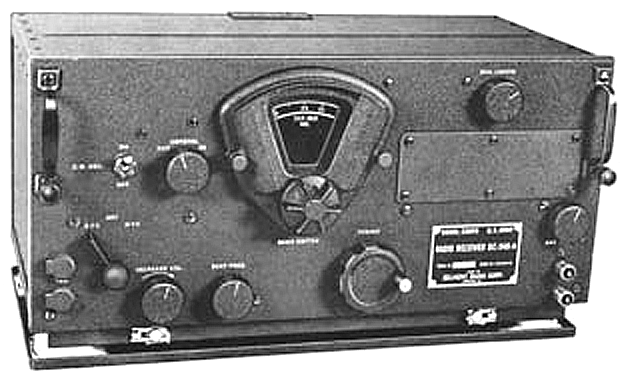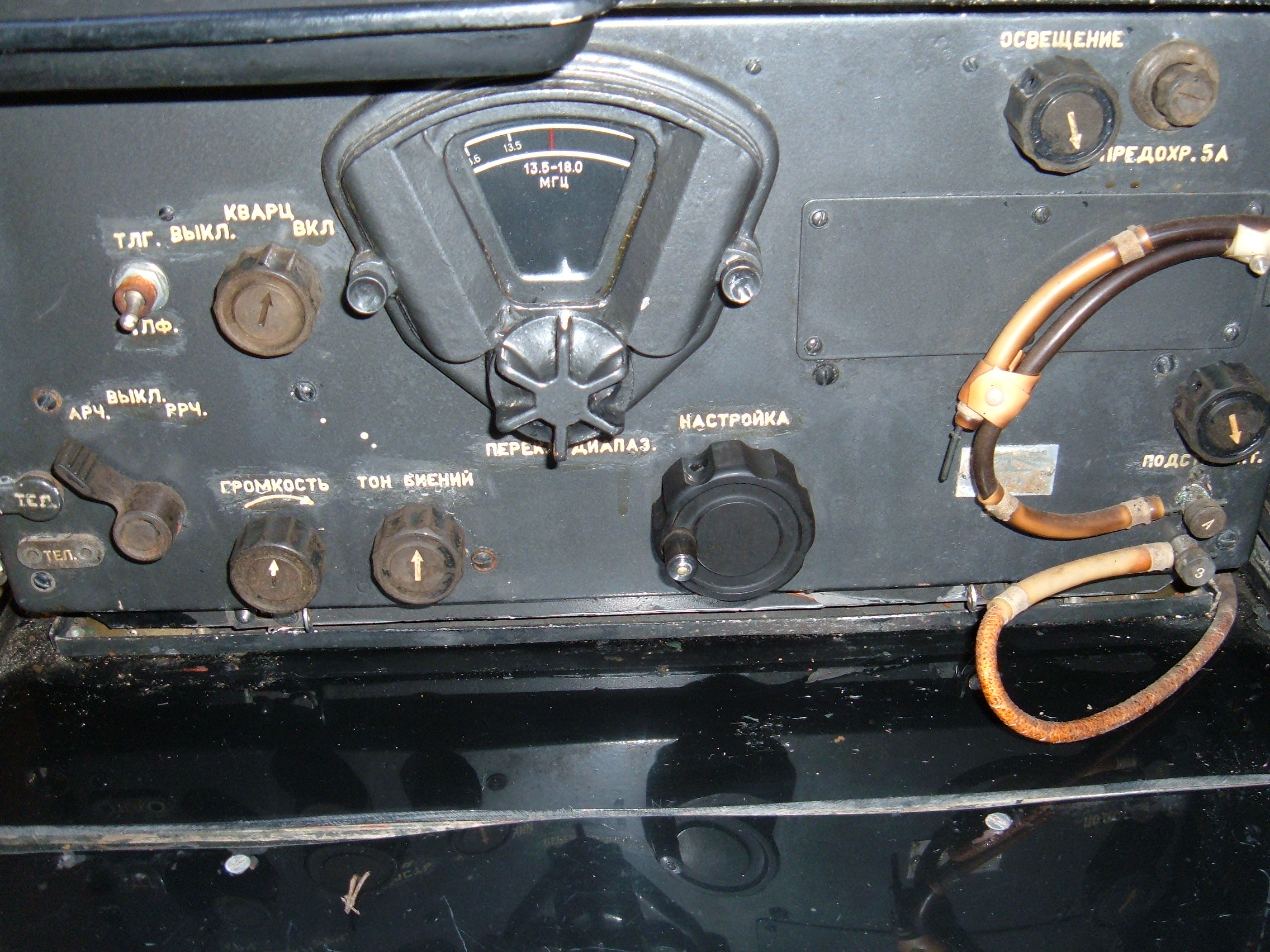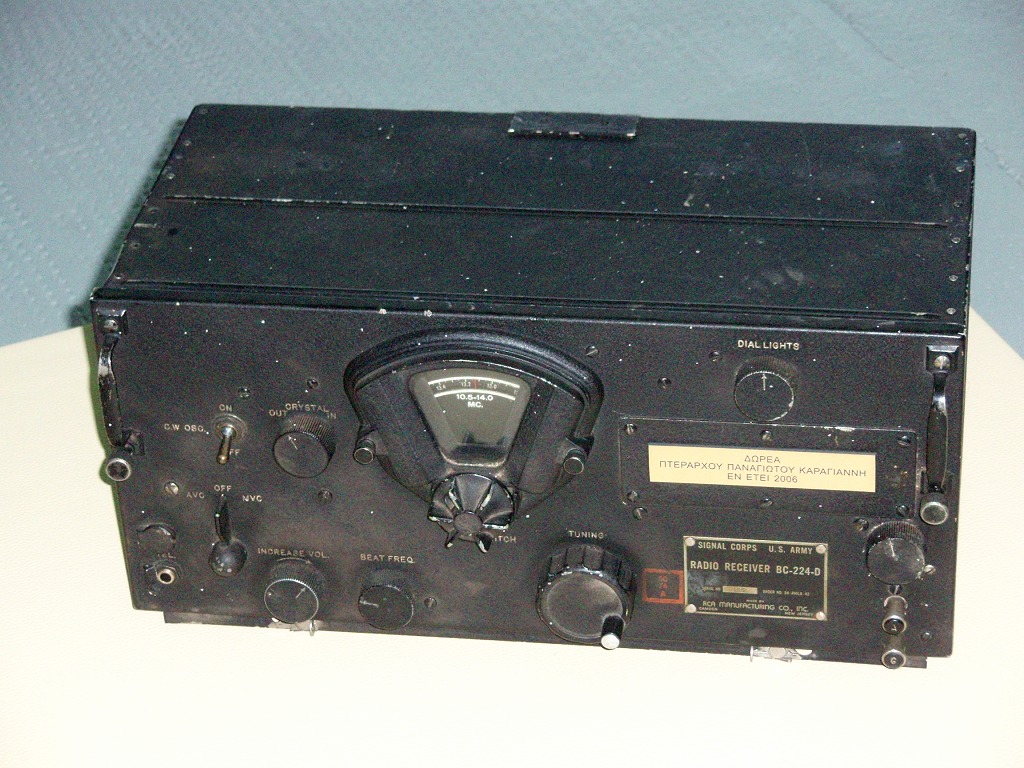BC-348 Liaison Radio Receiver on:
[Wikipedia]
[Google]
[Amazon]
The BC-348 is a compact American-made communications receiver, which was mass-produced during World War II for the U.S. Army Air Force. Under the joint Army-Navy nomenclature system, the receiver system became known as the AN/ARR-11.


 BC-348 receivers were copied and manufactured by the U.S.S.R. following War II, by the Russian Vefon Works and labeled УС-9 (US-9 in English) The УС-9 continued to be produced in the Soviet Union through the 1970s, with such improvements as a solid state inverter to replace the dynamotor.http://nj7p.org/history/bc-348.html BC-224 AND BC-348 AIRCRAFT RADIO RECEIVERS
BC-348 receivers were copied and manufactured by the U.S.S.R. following War II, by the Russian Vefon Works and labeled УС-9 (US-9 in English) The УС-9 continued to be produced in the Soviet Union through the 1970s, with such improvements as a solid state inverter to replace the dynamotor.http://nj7p.org/history/bc-348.html BC-224 AND BC-348 AIRCRAFT RADIO RECEIVERS
 The BC-224-A, -B, -C, and -D, and the BC-348-B, and -C, tuned 1.5-18 MHz in six bands. The Signal Corps had the receiver design modified to add a 200-500 kHz band and compress the 1.5-18 MHz coverage into the remaining five bands. This modified design became the BC-224-E and the BC-348-E. The 200–500 kHz and 1.5-18 MHz tuning range remained constant for subsequent production of all models.
The BC-224-A, -B, -C, and -D, and the BC-348-B, and -C, tuned 1.5-18 MHz in six bands. The Signal Corps had the receiver design modified to add a 200-500 kHz band and compress the 1.5-18 MHz coverage into the remaining five bands. This modified design became the BC-224-E and the BC-348-E. The 200–500 kHz and 1.5-18 MHz tuning range remained constant for subsequent production of all models.


History
The BC-348 is the 28 vdc powered version of the 14 vdc powered BC-224. The first version, the BC-224-A, was produced in 1936. Installed in almost all USAAF (and some USN, some British and some Canadian) multi-engined transports and bombers used during the fifteen-year period from before World War II through the Korean War, BC-348 radio receivers were easy to operate and reliable. Designed as LF/MF/HF receivers for use in larger aircraft (B-17, B-24, B-25, B-26, B-29, C-47, etc.), they were initially paired with a BC-375 transmitter in the ''SCR-287-A'' system. Late in World War II, the AN/ARR-11 (BC-348) was the receiver and the AN/ART-13A ( ART-13) was the transmitter in the AN/ARC-8 system. They were also used in some ground and mobile installations such as the AN/MRC-20. The BC-348 series ran through several variations during its long production history, which included the BC-224. More than 100,000 of these receivers were produced, 80 percent by Belmont Radio and Wells-Gardner and the balance by RCA andStromberg-Carlson
Stromberg-Carlson was a telecommunications equipment and electronics manufacturing company in the United States. It was formed in 1894 as a partnership by Swedish immigrants Alfred Stromberg (1861 Varnhem, Sweden - 1913 Chicago) and Androv Ca ...
.
Enola Gay
The ''Enola Gay'' () is a Boeing B-29 Superfortress bomber, named after Enola Gay Tibbets, the mother of the pilot, Colonel Paul Tibbets. On 6 August 1945, piloted by Tibbets and Robert A. Lewis during the final stages of World War II, it be ...
, the B-29 Superfortress bomber that dropped " Little Boy", the first atomic bomb
A nuclear weapon is an explosive device that derives its destructive force from nuclear reactions, either fission (fission bomb) or a combination of fission and fusion reactions (thermonuclear bomb), producing a nuclear explosion. Both bomb ...
on Hiroshima
is the capital of Hiroshima Prefecture in Japan. , the city had an estimated population of 1,199,391. The gross domestic product (GDP) in Greater Hiroshima, Hiroshima Urban Employment Area, was US$61.3 billion as of 2010. Kazumi Matsui h ...
, Japan
Japan ( ja, 日本, or , and formally , ''Nihonkoku'') is an island country in East Asia. It is situated in the northwest Pacific Ocean, and is bordered on the west by the Sea of Japan, while extending from the Sea of Okhotsk in the north ...
, was equipped with a BC-348 receiver as part of the aircraft's AN/ARC-8 system. Today, many examples of the BC-348 are restored and operated by vintage and military amateur radio enthusiasts.http://www.vmarsmanuals.co.uk/ VMARS Technical Information Service
The AN/ARC-8 system was still in service in older USAF aircraft in the early 1970s. At that time, military surplus dealers near Davis-Monthan Air Force Base in Tucson, Arizona, had stacks of the BC-348, that had been removed from aircraft, for sale to the public.
Specifications
 The BC-224-A, -B, -C, and -D, and the BC-348-B, and -C, tuned 1.5-18 MHz in six bands. The Signal Corps had the receiver design modified to add a 200-500 kHz band and compress the 1.5-18 MHz coverage into the remaining five bands. This modified design became the BC-224-E and the BC-348-E. The 200–500 kHz and 1.5-18 MHz tuning range remained constant for subsequent production of all models.
The BC-224-A, -B, -C, and -D, and the BC-348-B, and -C, tuned 1.5-18 MHz in six bands. The Signal Corps had the receiver design modified to add a 200-500 kHz band and compress the 1.5-18 MHz coverage into the remaining five bands. This modified design became the BC-224-E and the BC-348-E. The 200–500 kHz and 1.5-18 MHz tuning range remained constant for subsequent production of all models.
References
General references
*U. S. Army Signal Corps Technical Order No. 08-10-24, 12 June 1936, ''Instruction Book for Radio Receiver BC-224-A manufactured by RCA Manufacturing Co., Inc., Camden, N.J., U.S.A., Order No. SC-132373'' *Army Air Forces Technical Order No. 08-10-119, December 15, 1942; ''Instruction Book for Operation and Maintenance of Radio Receiver BC-348-E Radio Receiver BC-348-M Radio Receiver BC-348-P'' *U.S. Air Force Technical Order 12R2-3BC348-2, revised 15 April 1957; was AN 16-40BC-348-3, 21 June 1948; was AN 08-10-112, 17 July 1943, revised 18 December 1943, revised 30 July 1945; ''Handbook Maintenance Instructions Radio Receivers BC-348-J BC-348-N BC-348-Q'' *U.S. Air Force Technical Order 12R2-3BC-112, revised 15 April 1957; was AN 16-40BC224-2, 20 July 1945, revised 11 May 1948; ''Handbook Maintenance Instructions Radio Receivers BC-224-F BC-224-K BC-348-H BC-348-K BC-348-L BC-348-R''See also
* ARC-5 * ART 13 transmitter * BC-610 * BC-654 * Collins Radio * Hammarlund super pro * National HRO * R-390A {{DEFAULTSORT:BC 348 Military radio systems of the United States World War II American electronics Equipment of the United States Air Force Telecommunications equipment Radiofrequency receivers Military equipment introduced in the 1930s